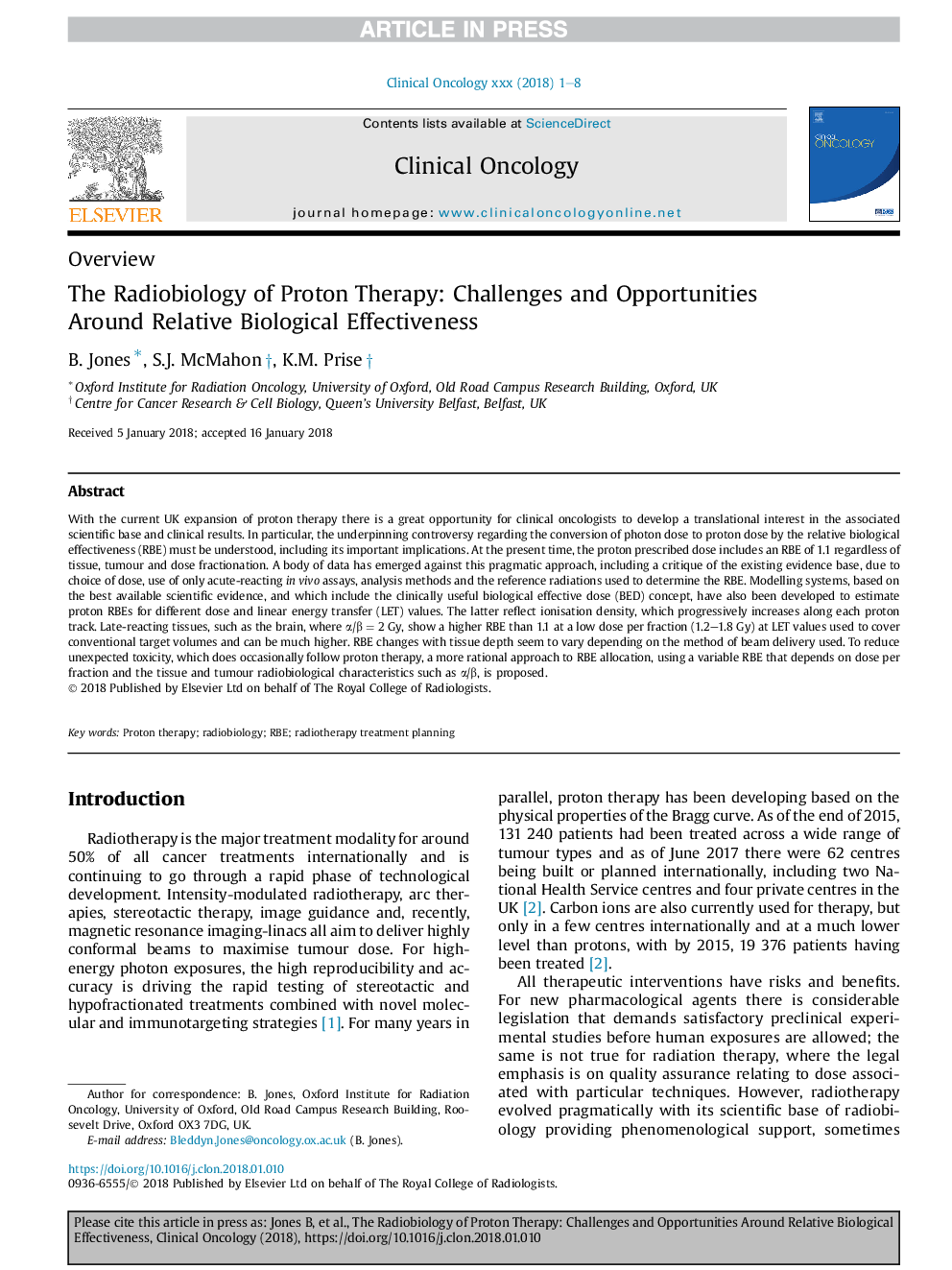| Article ID | Journal | Published Year | Pages | File Type |
|---|---|---|---|---|
| 8786150 | Clinical Oncology | 2018 | 8 Pages |
Abstract
With the current UK expansion of proton therapy there is a great opportunity for clinical oncologists to develop a translational interest in the associated scientific base and clinical results. In particular, the underpinning controversy regarding the conversion of photon dose to proton dose by the relative biological effectiveness (RBE) must be understood, including its important implications. At the present time, the proton prescribed dose includes an RBE of 1.1 regardless of tissue, tumour and dose fractionation. A body of data has emerged against this pragmatic approach, including a critique of the existing evidence base, due to choice of dose, use of only acute-reacting in vivo assays, analysis methods and the reference radiations used to determine the RBE. Modelling systems, based on the best available scientific evidence, and which include the clinically useful biological effective dose (BED) concept, have also been developed to estimate proton RBEs for different dose and linear energy transfer (LET) values. The latter reflect ionisation density, which progressively increases along each proton track. Late-reacting tissues, such as the brain, where α/β = 2 Gy, show a higher RBE than 1.1 at a low dose per fraction (1.2-1.8 Gy) at LET values used to cover conventional target volumes and can be much higher. RBE changes with tissue depth seem to vary depending on the method of beam delivery used. To reduce unexpected toxicity, which does occasionally follow proton therapy, a more rational approach to RBE allocation, using a variable RBE that depends on dose per fraction and the tissue and tumour radiobiological characteristics such as α/β, is proposed.
Related Topics
Health Sciences
Medicine and Dentistry
Oncology
Authors
B. Jones, S.J. McMahon, K.M. Prise,
